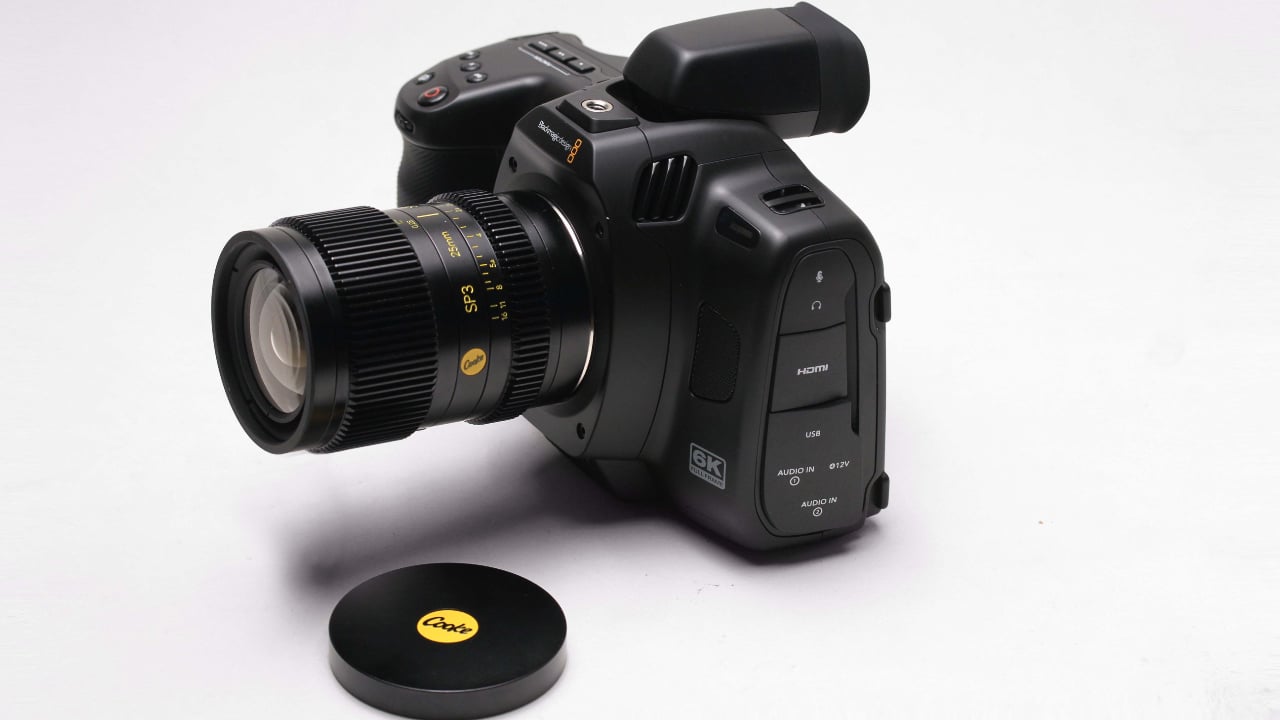
From its full-frame nature to the adoption of L-Mount to the fact that it only costs $2500, Phil Rhodes finds there is a lot to like about the Blackmagic Cinema Camera 6K.
Many things about Blackmagic’s new Cinema Camera 6K are, well, a lot. 6K is a lot, as we discovered to our delight when we considered its predecessor. Full frame is also a lot, as people have known since the high overall performance of Sony’s A7S series became clear way back in 2014. The L mount lets us use a lot of lenses. So, Blackmagic’s new camera promises much.
The decision to drop the “pocket” description is overdue for something that would only fit a Yeti’s pocket. The immediate impression is that it handles more or less identically to Blackmagic’s previous pocket cameras; it’s the same chassis, give or take the truncation for a shallower lens mount. That means miniature XLRs (but at least they’re XLRs; they could hardly be full size) and the latching power connector we liked so much on the previous model.
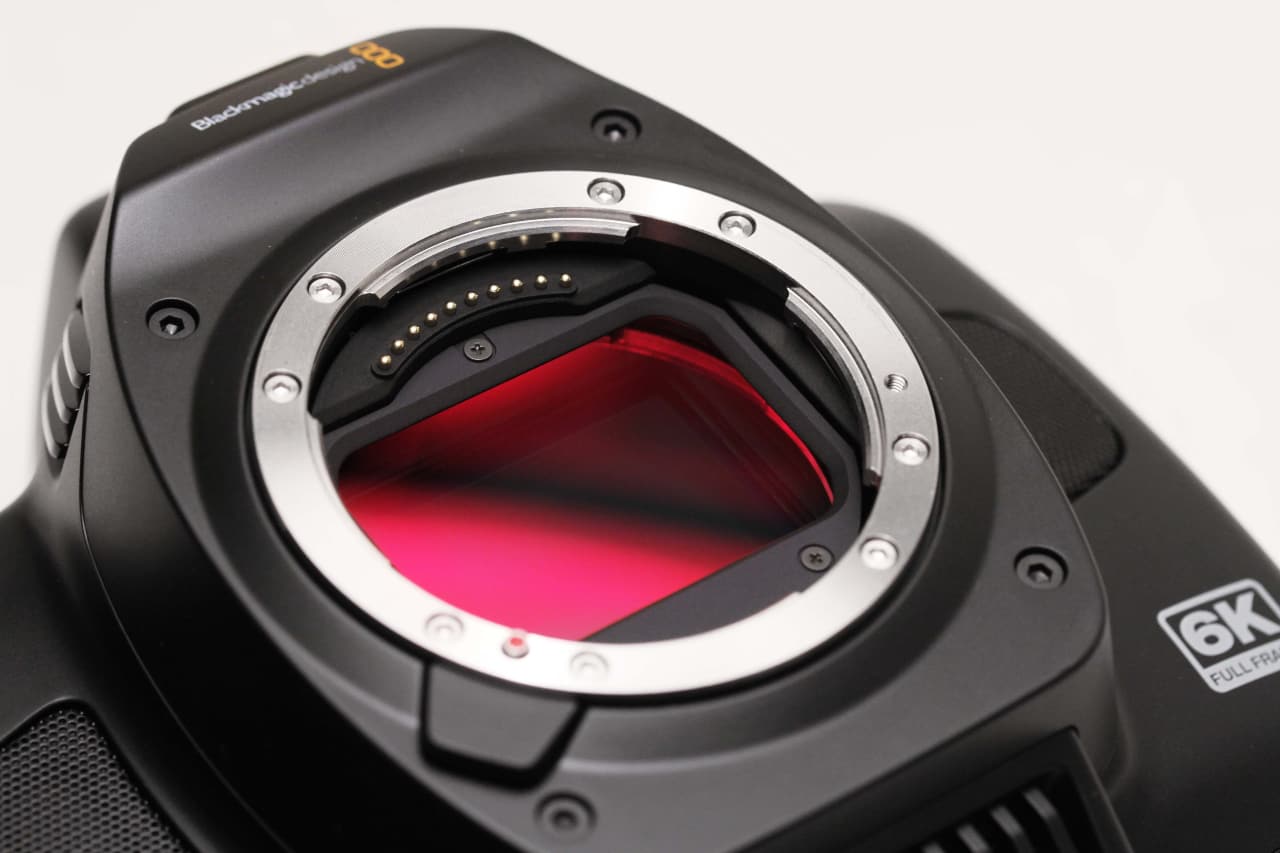
Adoption of the L mount is extremely welcome. Such a huge chip is a horse for a very specific course, but if that's what you want, there it is
Blackmagic’s adoption of the L mount is a very good idea. However, with our curmudgeon hat on, the celebration is blunted by the fact that it is also, perhaps, something that should have happened sooner, especially on the Ursas. The short mount necessarily costs us the internal ND filters, but that’s more than worthwhile, given the galactically expanded lens options that the L mount creates. In the accompanying images, we see the camera with the upcoming L-mounted version of Cooke’s SP3s, a match made in heaven.
The natural reluctance to remove such interesting lenses from such an interesting camera did mean we couldn’t test the autofocus, which is something that people easily become very used to on cameras from the likes of Canon and Sony. Panasonic’s scramble to get phase detection into the S5 Mk. II is presumably a consequence of the skyrocketing performance of autofocus-for-video in general. At some point, we’ll likely have an opportunity for a more in-depth look at this, though Blackmagic’s autofocus has been basic in past cameras, and there’s no big fanfare about any change here.
Picture quality
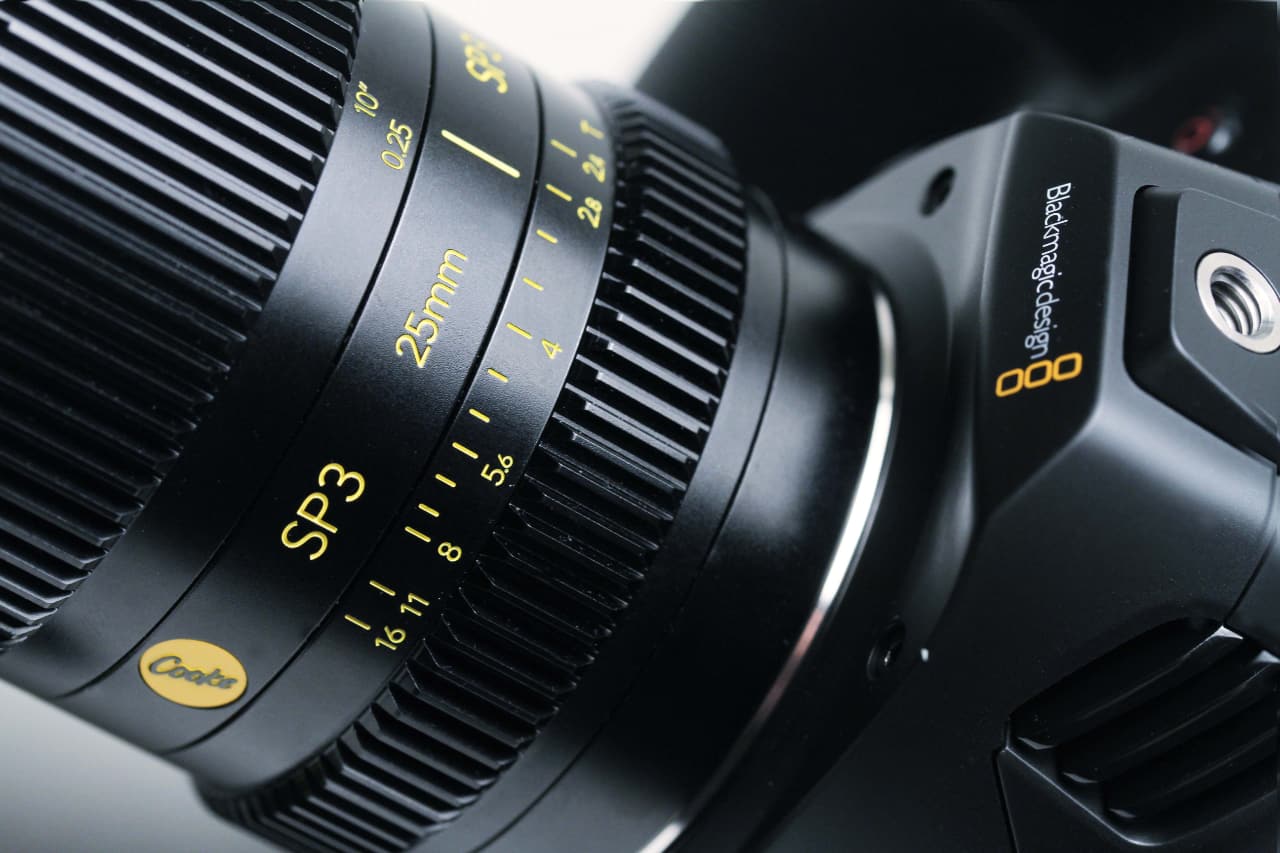
A distinctly heavenly combination
So, to pictures, which are always a complex subject. Inasmuch as there’s opinion inherent in the image engineering of a camera like this, Blackmagic’s opinion has always been easy to like. This is the company that got respectable results out of a sensor derived from machine vision technology in the original 4K cameras. The Cinema Camera 6K’s pictures are both pretty and generally fairly compatible with the output of the company’s other cameras. If that seems subjective, it is, but unfortunately, there is no standard index unit for picture niceness.
The characteristic behavior of a full-frame camera is immediately apparent, creating a large field of view with depth-of-field staying short even at short focal lengths. One of the interesting things about the Cinema Camera 6K is that it lets us experiment with sensor sizes and compare things; lenses that look sharp on a Super-35mm sensor might look a lot more agricultural when we can see all the way into the corners of a full-frame image. The SP3 lenses, which seem destined for phenomenal popularity, demonstrate this behavior very nicely.
There are other applications for all that silicon. 6048 photosites across a 36mm imager make for a pitch of 168 per millimeter, with the result that a (windowed) DCI 4K image area is almost pixel-for-pixel Super-35mm sized. That’s good – that’s very good – because it means we have the option, given sharp lenses, to shoot effectively a Super-35mm movie for a 4K finish with a big 6K look-around area, or to make full use of classic anamorphics. The spare pixels are especially valuable on an unmanned camera placed to capture a stunt or special effect or on smaller shows where precision camera operating is more an ambition than a reality.
A ProRes future?
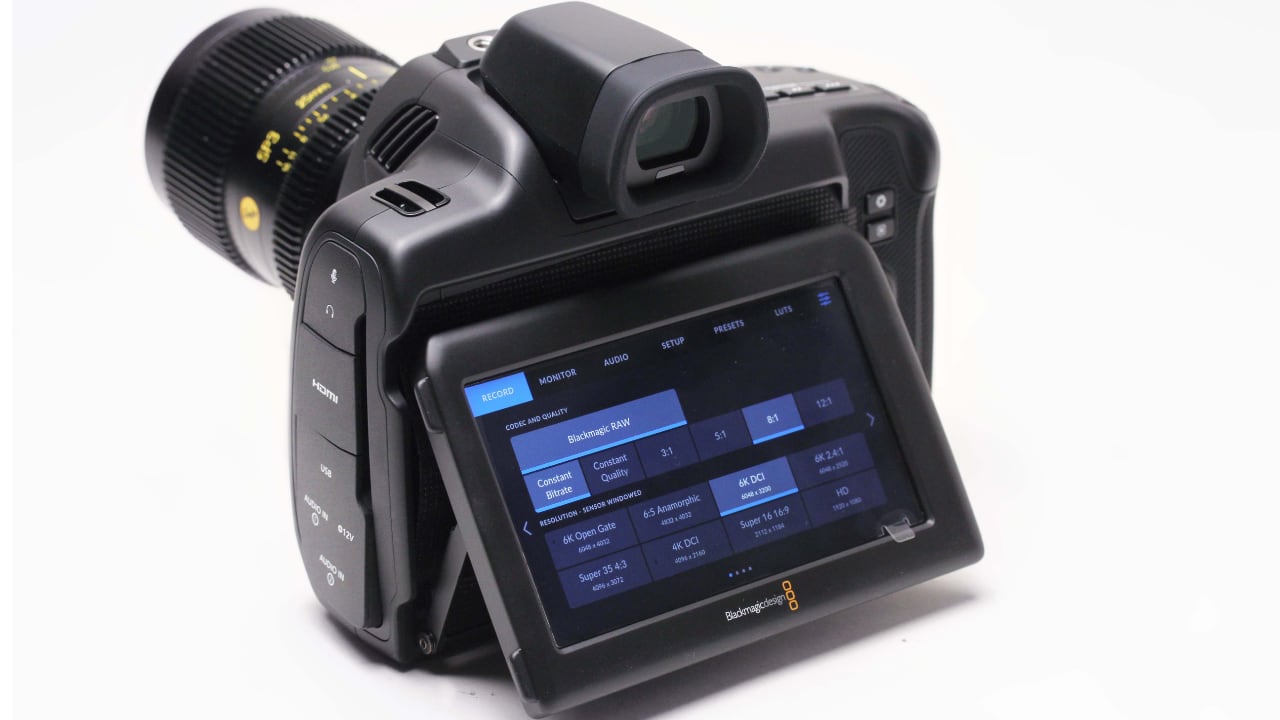
The company's well-liked menu system persists here. The choice of Blackmagic Raw or Blackmagic Raw is less welcome, although ProRes has not been ruled out
The company has not ruled out ProRes in future firmware, nor has it confirmed it. Current cameras support only Blackmagic Raw (plus H.264 proxies). It’s always going to be easy to find benefits to proprietary codecs, given developers are free to add advanced features without going through a standardization process. On the other hand, not every client likes the attendant archivability and compatibility issues (OK, ProRes is proprietary, but once encode and decode is in the open source tools it’s hard to claim that’s really a practical problem.) Greatly alleviating this concern is the fact that with Resolve, the company has one of the world’s most competent and affordable edit, color, audio, and effects tools in-house. Still, it’s easy to trip over things we’d like to do but can’t because some old favorite piece of software can’t read the files. The lack of choice here is not a plus.
The camera takes NP-F550-style batteries, which last more than an hour but less than two, depending on usage. Blackmagic likes programmable logic, while cameras using custom silicon are inevitably less thirsty, which may be why the review kit included the bolt-on battery module, which takes two more NP-F550s. All this makes us think about size and weight. We said the Panasonic S1H was a chunky beast at 114 by 151 by 110mm; the Cinema Camera 6K is shallower but even more imposing at 122 by 180 by 94. It may come as a surprise to people used to tiny mirrorless designs, or it may delight people used to a Venice.
So, which camera is it?
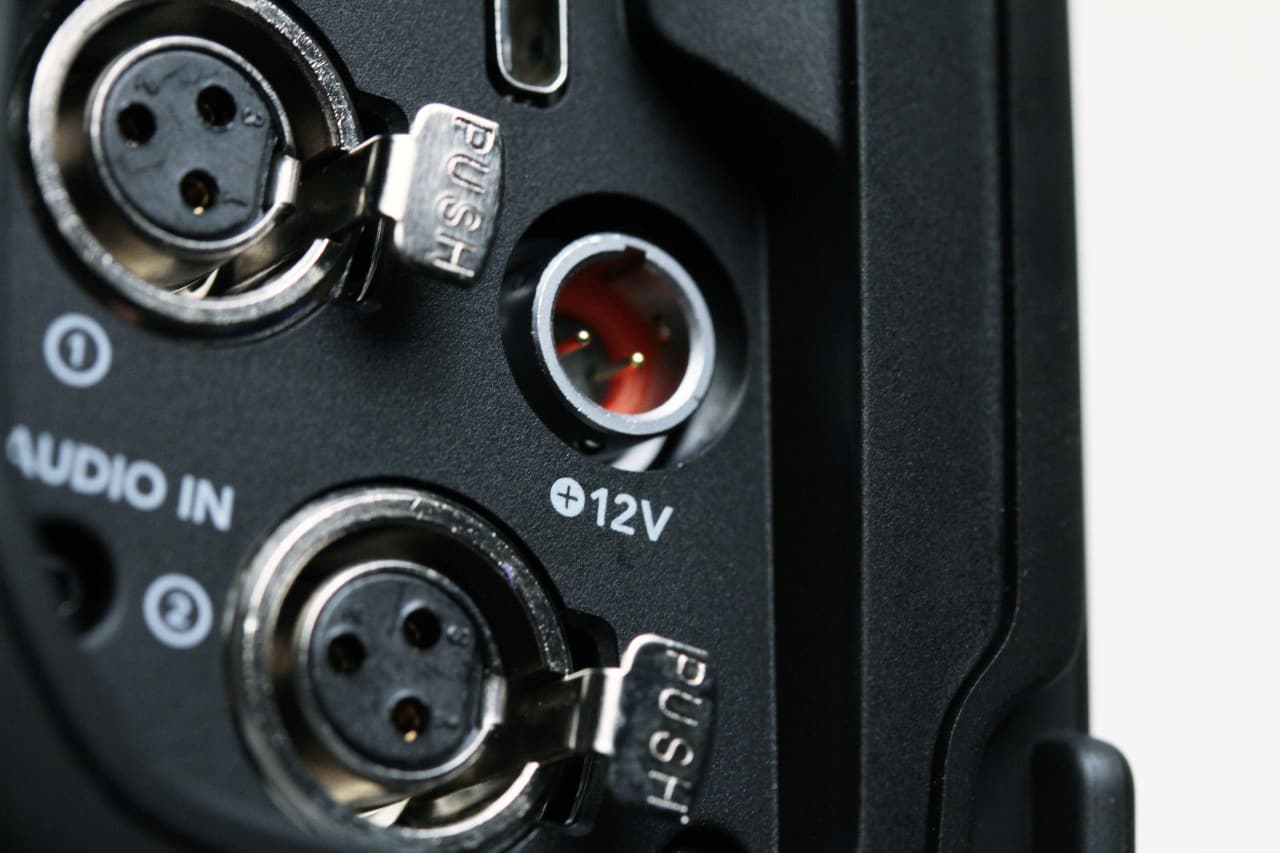
The connector area seems less likely to disintegrate under stress than some competing designs, with mostly latching connectors and a full-size HDMI connector
The relevance of all this depends on how we interpret the camera: is this a high-portability version of a Ursa Mini or a high-performance alternative to a smaller, genuinely pocket-sized option? If small is what we want, we could pick up a Sigma FP (a mere 113 by 70 by 45mm) and shoot raw to external drives – although it is a 4K camera, doesn’t go as fast, isn’t as sensitive, and the data load of truly uncompressed raw might tax logistics on exactly the sort of production that would use an FP as its A-camera in the first place.
A full-frame sensor from Blackmagic was perhaps inevitable. B&H lists the Cinema Camera 6K at around $2500, which makes it a shade cheaper than an S1H at $2800 but considerably less than a $3500 A7S. Those are much less dedicated video devices, though, and the 6K seems most likely to steal trade from the FX3 at $3900 (which lacks 6K modes). It’ll be interesting to see if there’s a 6K full-frame Ursa Mini coming up, or perhaps the box camera, which has been repeatedly memed-about in a Blackmagic context. Still, until then, the Cinema Camera 6K seems well capable of carving out a niche.
Tags: Production Featured Review Cameras


Comments